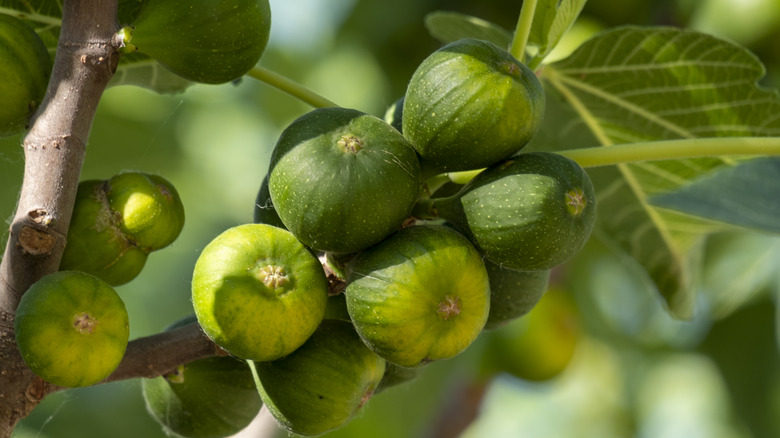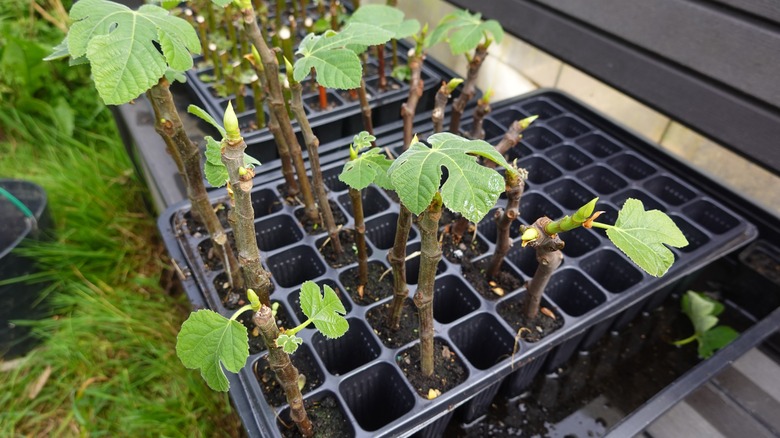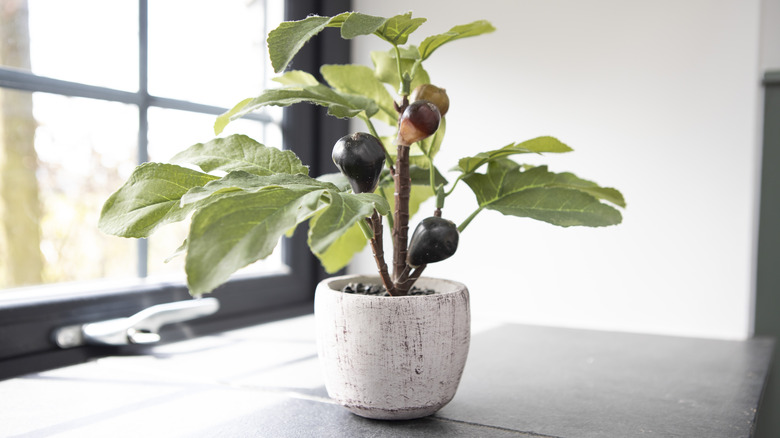Easy And Helpful Tips To Successfully Propagate A Fig Tree
With their hardiness and will to thrive, fig trees are one of the easiest fruit trees to propagate. There are a few ways to propagate fig trees, but the most reliable method is to use a cutting, which is a small shoot or branch that's removed from a mature tree. Cuttings are a natural byproduct of pruning a garden's fig trees, which is an important task to complete regularly to keep them from becoming overgrown and to foster fruiting. A trimmed branch can grow its own roots and become a completely new plant. This propagation technique is simple and has a high success rate, making it a great choice for even beginner gardeners. When using this propagation method, follow these tips: begin with a good cutting, use a liquid rooting hormone and heating pads, and keep the trees in containers.
Though it's possible to propagate a fig tree from a seed, it's a riskier choice. With a seed, the tree can either be male or female, but only the female plants produce the fruits we typically eat, while the male plants grow fruits that are smaller and cannot be eaten. Instead, when you take a cutting from a female fig tree, you eliminate the chance of growing a plant that doesn't have edible figs.
Use cuttings to easily propagate a fig tree
The trick to successful propagation is starting with a good cutting. While you can take cuttings from a tree at any time of year, they are best taken in winter when the tree is dormant. A great cutting has at least four leaf nodes, is cut off the parent plant close to a node, and is about 6 to 10 inches long. It should also be at least half an inch thick.
There are two approaches to getting the cuttings to grow roots. The simplest option is to place the cuttings in a bucket with bark and potting soil and see what takes hold. The more reliable method is to plant the cuttings in seedling cups. You'll first take a large shallow plastic container and fill the bottom with mulch. Then, add plastic seedling cups on top and fill them with potting soil. Water the soil and create a hole in the center of each cup. Prepare the cuttings by using gardening shears to make shallow vertical slits on one end, then stick the cuttings in the holes. Finish by tightening the soil around the cuttings, adding another layer of mulch, and watering again.
In either case, the newly planted cuttings should remain in a protected area, such as a garden shed or garage, for about eight weeks. Fig trees are resilient and low-maintenance at maturity, but the plants must be watered at least once per week during this initial growth phase.
Tips and tricks for the most successful propagation
Though optional, the cuttings can greatly benefit from a liquid rooting hormone when first planted. After making the vertical slices on the ends of the cuttings, dip them into some rooting hormone that's been diluted in water before putting them in each seedling cup. Another extra step you can take to ensure success is to store the seedlings on a heating pad. Since fig trees originated in the Middle East and Western Asia, they love warm conditions. However, they're not picky, being one of the few cold-tolerant tropical plants.
You can continue to influence the fig trees' development even after they're rooted and ready to be transferred to larger planters. Fig trees tend to be bushy and their roots want to spread out — so much so that they can be considered invasive, which is one of several reasons why you may want to reconsider growing fruit-bearing fig trees in your yard. In fact, if left unchecked, their roots can damage underground pipes and other structures. You can manage the trees' growth and allow them to focus on producing figs by keeping the trees in planters. If you live in an especially cold climate, another benefit of planting in containers is that this allows you to move the trees indoors during the winter if needed.


